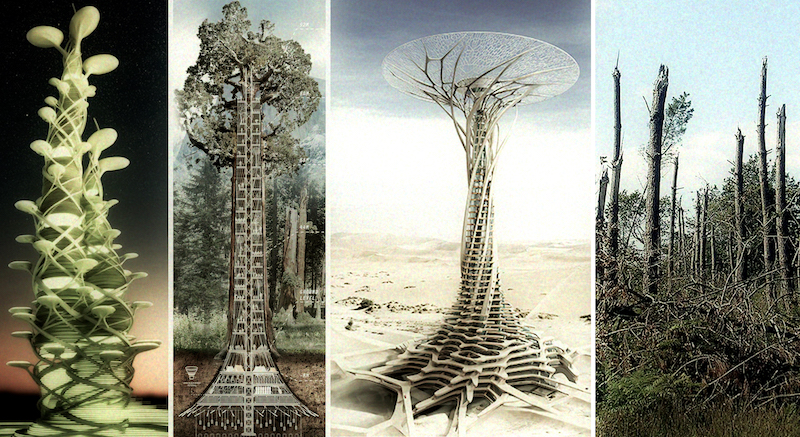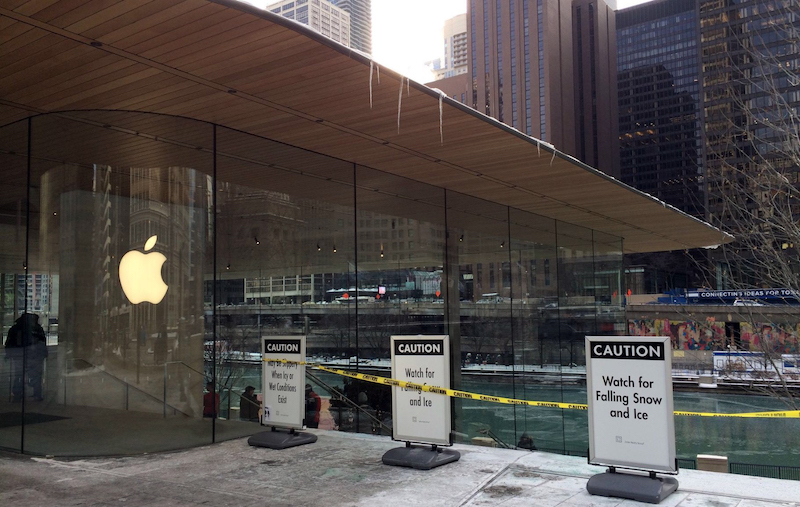This article has been originally published as part of the column FABBRICATION in XXI magazine, vol.156, February 2017. This article can be accessed here in Turkish.

Adnan Oktar, aka Harun Yahya the passionate advocate of biomimicry, and his “pussycat dolls” constructed with a Voronoi diagram. Our first, and last, use of Voronoi – developed specifically for the creation of this image.
Last month we introduced the epidemic of bullshit in design and in the first installment of our trilogy on bullshit we covered the lust for tools and how bullshitters regard new technology as objects of fetish. In this issue, we examine how they desecrate methodologies to create design abominations. We start with a personal favorite which is also an extremely popular and cheap perversion of computational design.
Considering we had labeled Voronoi as the most blasphemous sin of all in computational architectural design in our first paragraph ever in Fabbrication1, it should come as no surprise that we loathe the out-of-context use of Voronoi diagrams in architectural design, especially towards justifying the design of organic looking randomness in the name of being computational. It is high time we expand on the reason why we regard it as such. Use of Voronoi diagrams dates back to 17th century, way before its formalization by its namesake Georgy Voronyi in 1908. One of its most famous use was by John Snow2 for the illustration of how the cholera outbreak spread in London. Aside from illustrative purposes, Voronoi is immensely useful in geometry, natural sciences, engineering and informatics. Its dual graph corresponds to Delaunay Triangulation, they are great for modelling representations of cells and bone microarchitecture, serve as the best tool for the estimation of mineral reserves and they are used for the procedural generation of organic textures.
Overhearing the benefits, the bullshitter is delighted with its possible transition to architecture. After all, what works as the approximation of cellular structures MUST work with architecture, right? Never mind the difference in scale between cellular and architectural structures, or the dissimilarity of the materialistic properties of the two systems – let’s build everything with Voronoi! It is strictly mathematically driven, thus we can claim it is computational. It generates units that are unique and geometrically organic, hence seductive. Just sprinkle some pseudo-facts that this is architecture learning from nature through biomimetic and you are set for bullshitting.
This was a trend that started around twenty years ago in the schools that focused on computational design in architecture, and we are glad that the Voronoi era is dying out. However as with any trend, it arrived belated to Turkey. We still witness the farce full force, and we wish it would have remained naively only in student projects. Yet, when a professional presents a work clad with concrete which is geometrically driven by Voronoi as a novel work of computational design and fabrication compatible with the nature of the living (?), a dynamic procedure containing cellular data and bone structure (??), jumping straight out of an evolutionary animation (???), informed through a data network of spatial and internal forces3 – it is just too much for us. Combining random keywords meaninglessly really does not help. Always bullshit in moderation.
Mimicking nature is tricky. Biomimicry can be a powerful methodology when it is used to develop a functional strategy regarding the context and scale of the problem at hand. Tiny hooks of Velcro attaching to fabric is inspired by burs hanging onto dog fur, whereas the nano-structure of lotus leaves was the inspiration for hydrophobic self-cleaning coatings. The Shinkansen bullet train in Japan was modelled to bear resemblance to a kingfisher to decrease drag at high speeds and lower the noise while exiting a tunnel. MIT mimicked the geometry of a Namib Desert beetle’s shell which enabled the beetle to collect moisture towards the creation of a new material combining a superhydrophobic surface with superhydrophilic bumps that trap water droplets and control water flow. All of these great examples had concerns over the realization of a functional necessity while taking scale and context into consideration.

Biomimicry can be helpful when goal oriented, and extremely humiliating while bullshitting.
As a result of professional deformation, visual aesthetics overshadows the critical thinking in design process for the majority of the architects. Although few of the architects have grasped the relation between function, scale and context necessary in translating nature into design through biomimicry, a majority have failed to do so. Fear not Voronoists, you are not alone in your bullshitting sessions. Equally atrocious attempts to mimic nature with no concern for a framework towards the realization of a functional necessity have been carried out countless times.
Bullshit is unavoidable whenever circumstances require someone to talk without knowing what he is talking about. Thus the production of bullshit is stimulated whenever a person’s obligations or opportunities to speak about some topic exceed his knowledge of the facts that are relevant to the topic. 4Harry Frankfurt
Cue in the trees. Perhaps as a redemption for all the deforestation or degradation of forests caused directly or indirectly by their colleagues, some architects feel obliged to restore the balance by imitating the trees in their designs. Do they plan buildings which are carbon neutral or carbon positive, just like a tree improves its ecosystem through carbon filtering? Not really, less than a thousandth do so. Maybe they employ the passive water collection and water filtering techniques of some specific species for the sustainable conservation of one of the most precious resource for humankind; the water? Nope.
The bullshitter sees the tree, disregards all its exceptional properties within the ecosystem, and decides to model the structure of the building after the tree; because it will make it look organic, and thus the building will become part of the nature. Just as we think how anyone can go wrong by mimicking the tree, bullshitter does not disappoint.

Trees, the worst structures in nature for carrying loads and resisting wind. Yet, architects still try their luck in defying physics.
Whereas the structure as tree analogy might work in some special cases where the building scale is within a throw of stone, imagine what would happen if you applied to high-rises and skyscrapers in which the form limiting factor is often times the wind loads. Close your eyes and picture all the tree branches that have snapped in a storm, or just imagine how a tree accentuates even the smallest of winds romantically in any season. Ever saw the fruit trees bending in half during harvests? Oh how great it would be to live in such a surprising, uncomfortable setting! Never mind if the core of the skyscraper occupies more than 60% of built area, we are living inside a high-rise tree! We wish the academic designer would opt to utilize Finite Element Analysis for wind loads rather than mimic tree as the structure, but apparently only the cool grad kids in East Coast are allowed to use it for their non-sense building skins to look aesthetic. Always be goal-oriented and set the framework without bullshitting when mimicking nature. Otherwise you might end up being on the same side with Harun Yahya5, treating biomimicry as a marketing tool.
It is not only nature that is mimicked. Let’s say you are designing the flagship store for one of the greatest technology companies selling consumer electronics, so why not barrow from their playbook? In theory, industrial design can influence architectural design. What can go wrong if the store intentionally resembles an oversized laptop, as per architect’s decision – even though the roof lacks the logo6? Who are we to judge a knighted Lord of her Majesty?

Icicles have begun dangling from the ultrathin carbon fiber roof, resulting in caution signs and yellow tape cordoning off sections of the store’s outdoor plaza.
Yet, Lords also bullshit. Starting with roof that could not handle the first harsh weather conditions; what happened to the good old gutter? For a brief second after reading the news, we found ourselves wondering what if laptops had a gutter swathing all around the cover, would it have prevented formation of icicles? Could this drama be avoided thanks to industrial design? Later, it was announced it was a mishap due to a technical malfunction in the roof’s heating system. Well, we are looking for the hotfix or the patch for this bug, and waiting major system improvements providing stability and reliability on the next version.
The building’s sheets of ultra-clear, low-iron glass with enormous sizes give new meaning to the word “see-through”; such that the employees bump into the glass just like the birds during the migratory season flying up above the Chicago River. Not only that, the Lord Architect mentioned that the thin sheets are laminated together like “glass plywood” to provide structural support. The photos taken after the first snowstorm reveals a crack formed in the structural laminated walls, but who cares? The concept is true to form. The structural glass wall cracks like a phone screen.
There is a plethora of methodologies which the bullshitter can defile to his liking, and we merely scratched the surface. We have not even mentioned the abuse of shape grammars for the creation of Islamic looking patterns, nor using honeycombs or various geometry packing algorithms stripped from their spatiality per use as shelter for the homeless. Heck, we have even seen people trying to grow mycelium on concrete rich with lime. The problem lies deep within, and we have to dig deeper while addressing the elephant in the room – the educational institutions and their seclusion from the physical world.
- Check out helloWorld, in February 2017 edition of XXI.
- A real physician who lived in London sharing a name with a character from a popular TV show.
- Aside from the question marks representing our confusion, all of these descriptions are taken unaltered from the brief of the mentioned exhibition project.
- Harry Frankfurt’s “On Bullshit” p.63
- Alter ego of the famous TV evangelist Adnan Oktar. Harun Yahya utilizes biomimicry to push his agenda that God has created the perfect world, and ironically states that biomimicry is a major setback for scientist who support theory of evolution. He states that mimicking the flawless nature for technological advancements should be the go-to methodology for the future of mankind.
- Rumor has it that they initially considered placing the logo and later wisely rejected this kitschy move.
